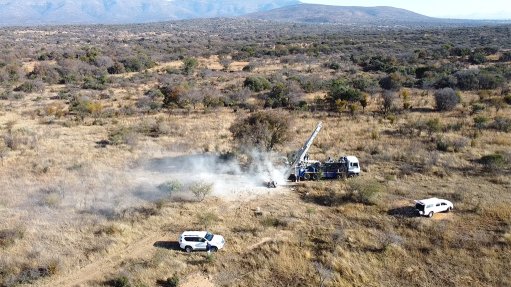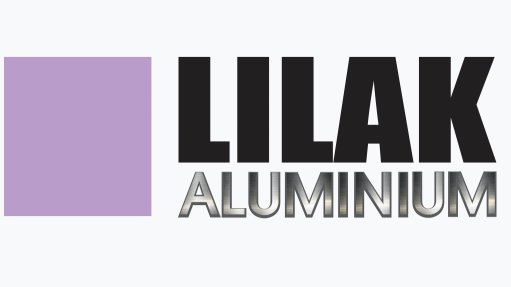Industry needs more clarity on transformation framework


TEBELLO CHABANA The current legal framework that governs mining companies is sufficient to make obligations enforceable, but not enough is being done to clamp down on practices such as fronting
South Africa’s mining industry continues to grapple with questions of regulatory certainty regarding transformation. Industry association and advocacy body Minerals Council South Africa stresses that clear, workable rules are critical not only for compliance and investment growth but also to limit cases of “fronting”, says Minerals Council public affairs and transformation senior executive Tebello Chabana.
The Minerals Council’s long-held position is that the Mining Charter is a policy instrument, rather than a binding law, and conceived as a negotiated framework, since its inception in the early 2000s, he adds. This, however, did not hold the industry back in embarking on its transformation journey, with the mining industry in fact being the “transformation pioneer”, says Chabana.
The High Court confirmed this interpretation in 2021, clarifying that Mining Charter III cannot override the Mineral and Petroleum Resources Development Act (MPRDA), but that the Minister of the Department of Mineral and Petroleum Resources (DMPR) retains powers to introduce binding regulations on transformation.
Chabana also states that, while the charter serves as a guiding framework, binding transformation obligations already exist elsewhere, with social and labour plans (SLPs), which cover mine community development, human resource development, procurement and other legally enforceable obligations, reviewable every five years.
No Lack of Law
Section 9(2) of the Constitution mandates broad-based empowerment measures, while the MPRDA prescribes specific transformation obligations within the mining industry.
“Mining companies report annually on their performance against their rights, SLPs and charter commitments. These are submitted to the DMPR, which audits the documentation and even does mine site-level inspections and audits, often involving stakeholders such as communities and empowerment partners,” adds Chabana.
While the framework is sufficient to make obligations enforceable, he strongly believes that the State could do more to clamp down on “fronting”, which is the practice of misrepresenting a company’s ownership, management or operations to appear compliant with transformation requirements, without delivering real empowerment.
Despite thousands of related complaints to the Broad-Based Black Economic Empowerment (BBBEE) Commission from various sectors of the economy, prosecutions remain few and far between.
A 2018 High Court ruling also settled the “once empowered, always empowered” debate, ensuring that mining companies which concluded empowerment deals would retain credit for those transactions, even if black shareholders subsequently sold their stakes, for the duration of the mining right, says Chabana.
“That judgment provided important certainty by recognising the continuing consequences of concluded deals. Our members simply adhere to the law as it now stands.”
Transformation Data
While the Minerals Council South Africa does not conduct member audits, Chabana confirms that it does collect industry-wide transformation data.
“Recent studies have highlighted substantial procurement and enterprise development contributions. Our 2024 inclusive procurement study showed that members spent R138-billion with historically disadvantaged South African- (HDSA-) owned companies, over R44-billion with women- and youth-owned businesses, and R175-billion with BEE-compliant suppliers.”
He says that Minerals Council South Africa members contributed R1.8-billion towards the growth of emerging enterprises in 2023, including R1.6-billion on supplier development initiatives. These supported more than 2 200 small-, medium-sized and microenterprises, with 30% of beneficiaries being women-owned and controlled and 18% youth-owned and controlled businesses.
Chabana acknowledges, however, that while spending levels are significant, measuring the impact on host communities remains a challenge: “We are trying to move beyond reporting inputs to assessing real outcomes, but as a voluntary association, we do not have capacity for deep audits.”
Article Enquiry
Email Article
Save Article
Feedback
To advertise email advertising@creamermedia.co.za or click here
Announcements
What's On
Subscribe to improve your user experience...
Option 1 (equivalent of R125 a month):
Receive a weekly copy of Creamer Media's Engineering News & Mining Weekly magazine
(print copy for those in South Africa and e-magazine for those outside of South Africa)
Receive daily email newsletters
Access to full search results
Access archive of magazine back copies
Access to Projects in Progress
Access to ONE Research Report of your choice in PDF format
Option 2 (equivalent of R375 a month):
All benefits from Option 1
PLUS
Access to Creamer Media's Research Channel Africa for ALL Research Reports, in PDF format, on various industrial and mining sectors
including Electricity; Water; Energy Transition; Hydrogen; Roads, Rail and Ports; Coal; Gold; Platinum; Battery Metals; etc.
Already a subscriber?
Forgotten your password?
Receive weekly copy of Creamer Media's Engineering News & Mining Weekly magazine (print copy for those in South Africa and e-magazine for those outside of South Africa)
➕
Recieve daily email newsletters
➕
Access to full search results
➕
Access archive of magazine back copies
➕
Access to Projects in Progress
➕
Access to ONE Research Report of your choice in PDF format
RESEARCH CHANNEL AFRICA
R4500 (equivalent of R375 a month)
SUBSCRIBEAll benefits from Option 1
➕
Access to Creamer Media's Research Channel Africa for ALL Research Reports on various industrial and mining sectors, in PDF format, including on:
Electricity
➕
Water
➕
Energy Transition
➕
Hydrogen
➕
Roads, Rail and Ports
➕
Coal
➕
Gold
➕
Platinum
➕
Battery Metals
➕
etc.
Receive all benefits from Option 1 or Option 2 delivered to numerous people at your company
➕
Multiple User names and Passwords for simultaneous log-ins
➕
Intranet integration access to all in your organisation















